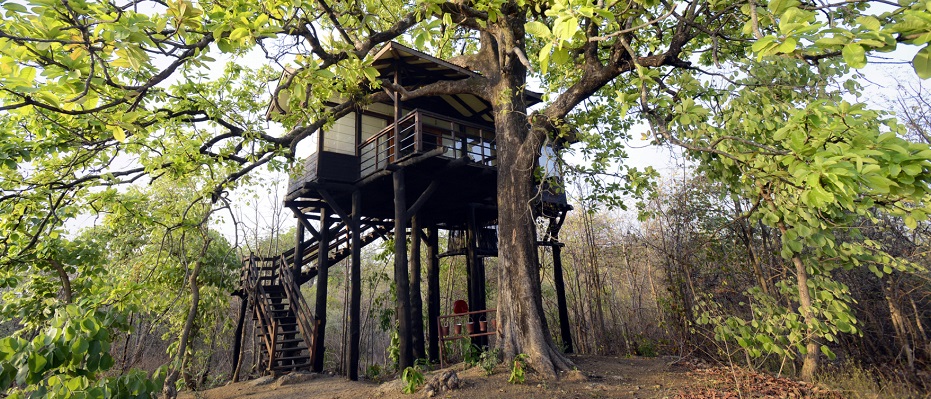Nestled on the southern boundary of Madhya Pradesh and spanning into Maharashtra, Pench National Park unfolds as a tapestry of diverse habitats and ecosystems, painting a vivid picture of India's rich biodiversity. Home to a plethora of flora and fauna, Pench stands as a testament to the delicate balance between nature and wildlife. Join me as we delve into the captivating Pench habitats and ecosystems that make Pench a haven for conservation and exploration.
Teak Forests:
One of the defining features of Pench is its expansive teak forests that blanket the landscape, creating a mesmerizing green canopy. Towering teak trees, with their distinctive straight trunks and broad leaves, provide a sanctuary for a myriad of species. The dappled sunlight filtering through the thick foliage creates an enchanting ambiance as one explores the trails and pathways that wind through these ancient woodlands.
Venturing into the heart of the teak forests unveils the intricate interplay between light and shadow, a dynamic dance that defines the rhythm of life within Pench. It is in these wooded realms that elusive leopards, agile langurs, and a myriad of bird species find refuge, forming an integral part of the park's intricate web of life.
Grasslands and Savannahs:
As the landscape unfolds, the teak forests give way to expansive grasslands and savannahs, adding a different dimension to Pench's diverse habitats. Tall grasses sway in the breeze, providing a picturesque setting for a variety of herbivores such as spotted deer, sambar, and the majestic Indian bison, locally known as 'gaur.' The open expanses of grasslands also serve as prime hunting grounds for the park's predators, including the elusive Bengal tiger.
The juxtaposition of teak forests and grasslands creates a harmonious mosaic, allowing for a rich diversity of wildlife to thrive in Pench. Jeep safaris and guided walks offer an immersive experience, providing visitors with the opportunity to witness the intricate relationships between herbivores, predators, and the surrounding vegetation.
Water Bodies and Riparian Ecosystems:
The meandering Pench River, which gives the park its name, forms a lifeline for the region's wildlife. Its banks are adorned with lush vegetation, creating thriving riparian ecosystems. Water bodies within the park, such as ponds and lakes, become crucial oases for both resident and migratory birds, as well as a congregation point for various herbivores.
Crocodiles bask in the sun on the riverbanks, while vibrant kingfishers dart above the water in search of their next meal. The symphony of bird calls along the river is a testament to the avian diversity that calls Pench home. A boat safari along the Pench River offers a unique perspective, allowing visitors to witness the interconnectedness of land and water ecosystems.
Conservation Challenges and Successes:
While Pench National Park is a showcase of nature's wonders, it is not immune to the challenges of conservation. Human-wildlife conflict, habitat degradation, and poaching pose ongoing threats to the delicate balance within the park.
Dedicated conservation efforts, however, have yielded positive results. Community engagement, strict anti-poaching measures, and sustainable tourism practices contribute to the ongoing success of Pench as a protected area. The park serves as a model for the coexistence of wildlife and human communities, illustrating the potential for harmony between conservation and development.
As the sun sets over the diverse landscapes of Pench National Park, painting the sky with hues of orange and pink, I leave with a profound appreciation for the intricate tapestry of habitats and ecosystems that make this wilderness a treasure trove of natural wonders. Pench is not just a national park; it's a living testament to the resilience and beauty of India's diverse flora and fauna.

